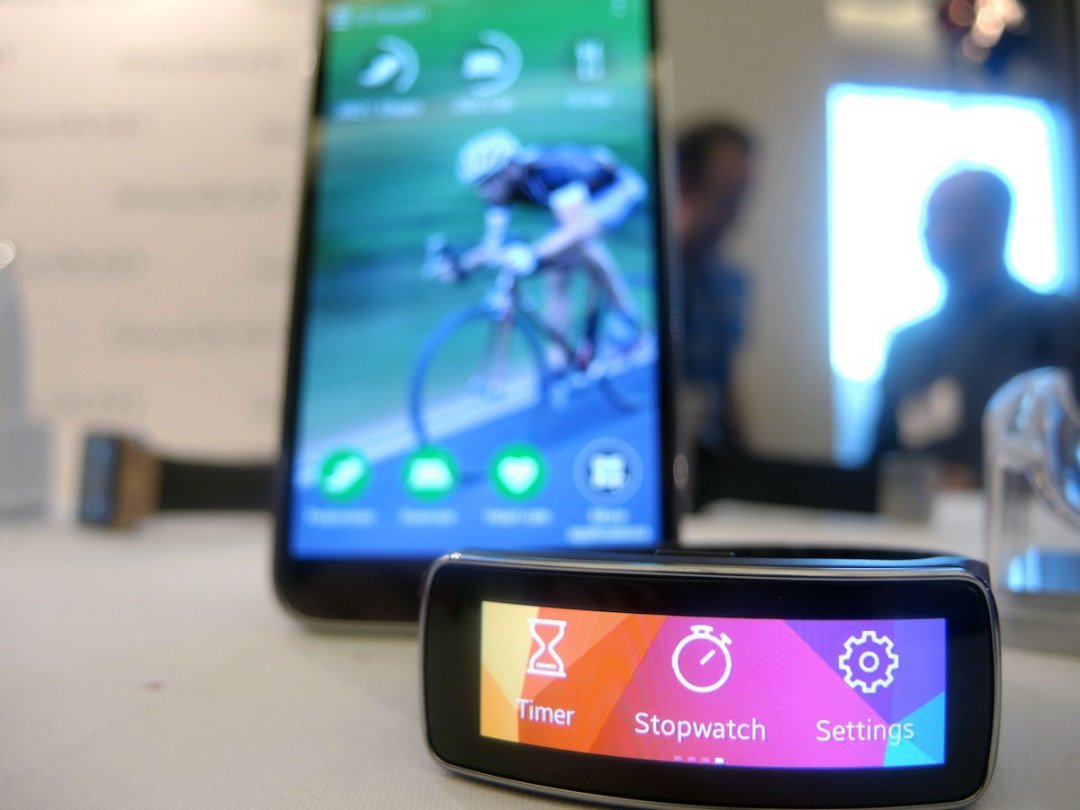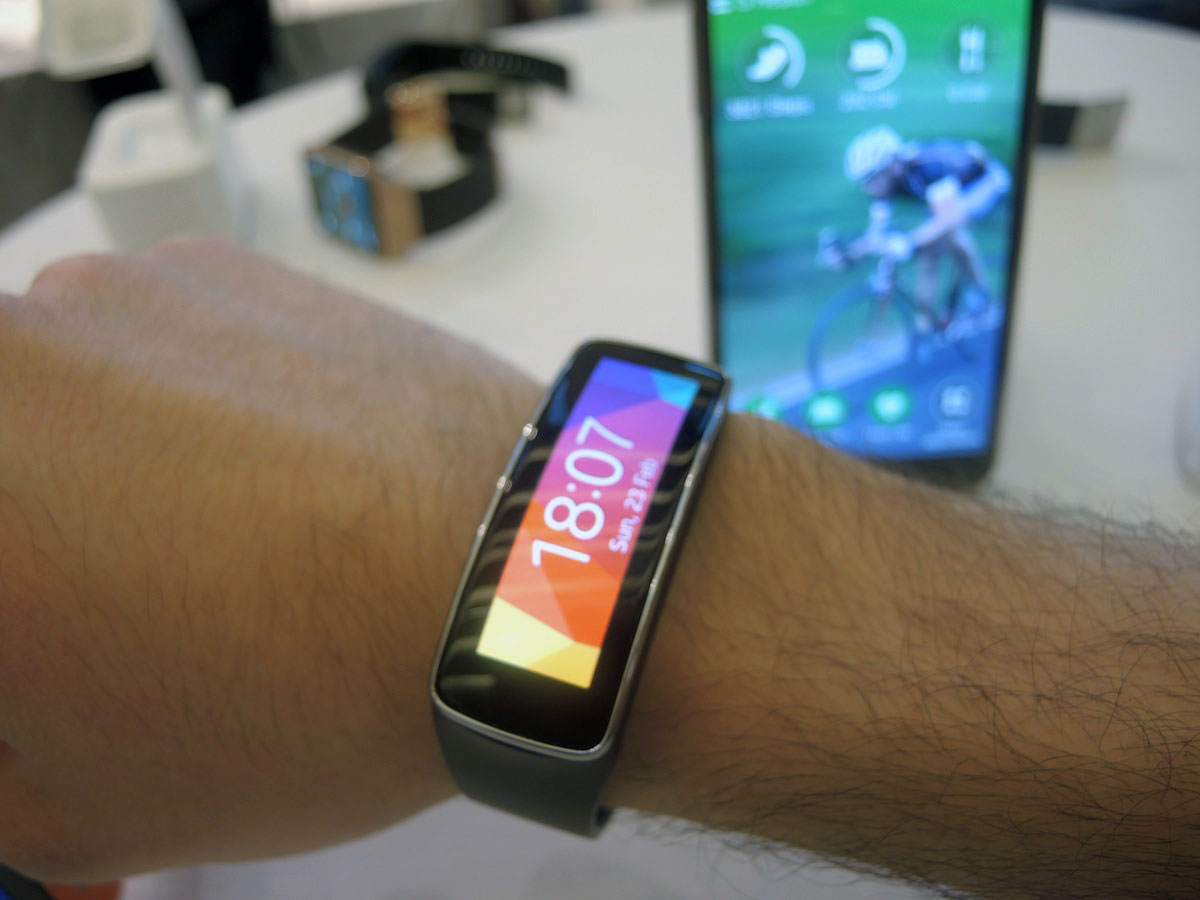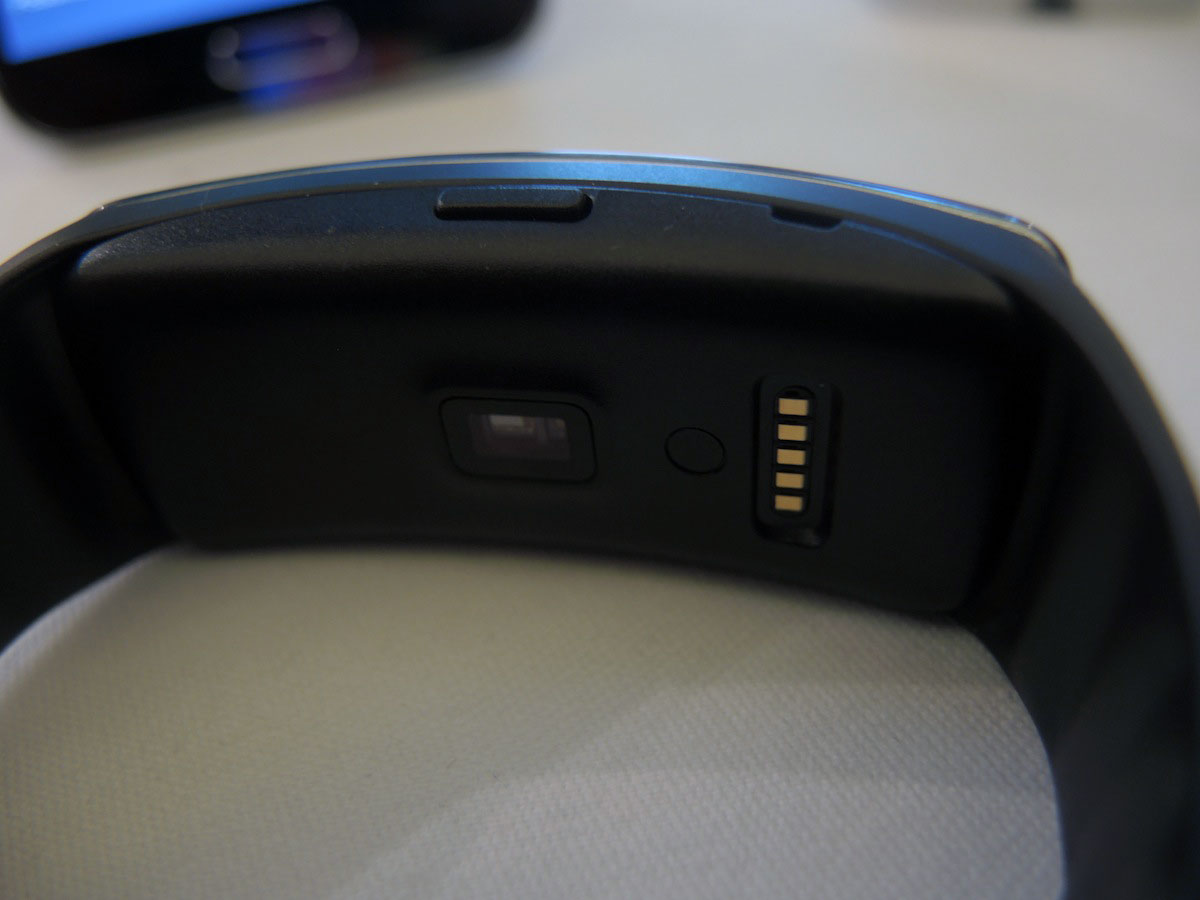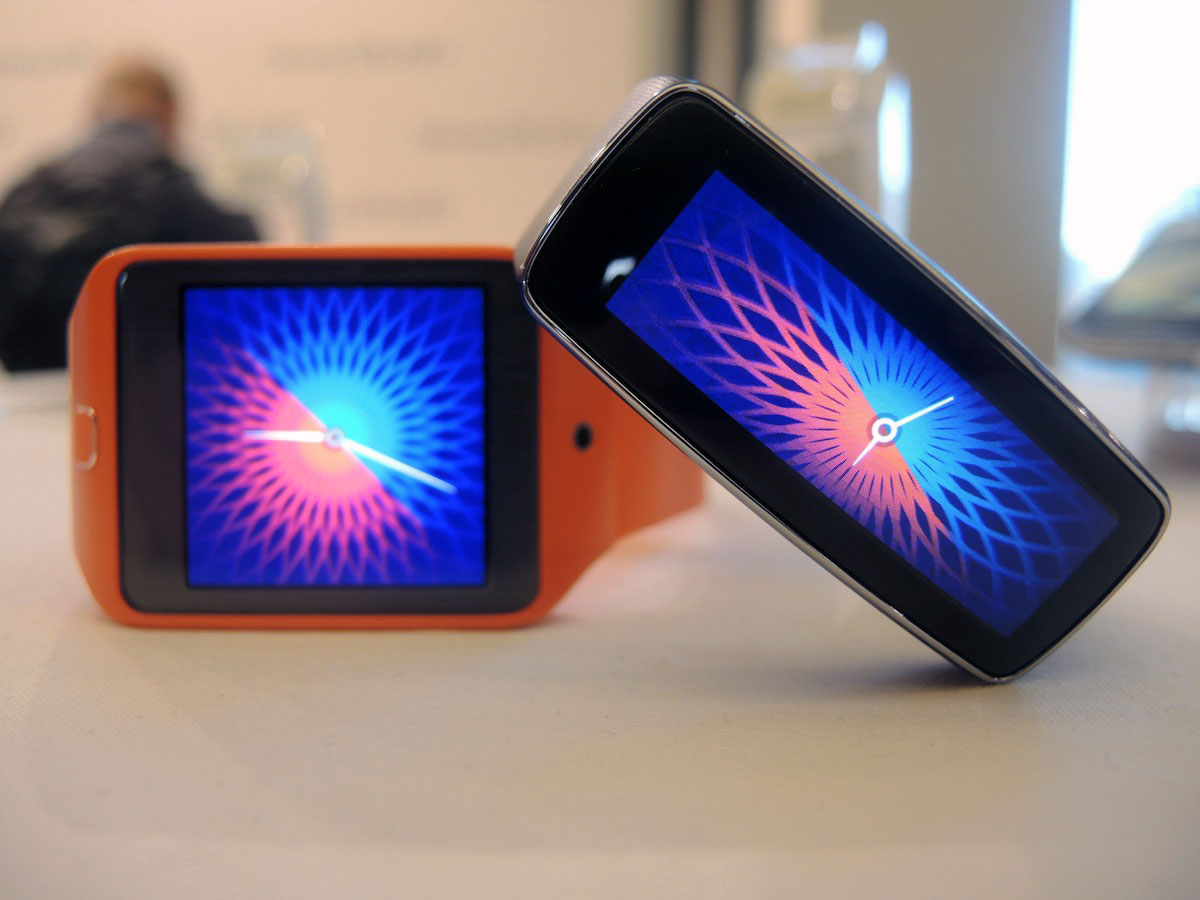Samsung Gear Fit hands-on review – curved display + heart-rate sensor = fitness band gold
We run our fingers around the fitness-oriented smartwatch's subtly bent OLED [updated with video]

Samsung has been busy. Not only has it served up two Gear 2 smartwatches, but it’s gone and released the Gear Fit too – its own unique take on the fitness band.
As well as the usual activity tracking, the Gear Fit can issue notifications from a connected smartphone and will monitor your heart rate to better work out just how active you really are. We had the pleasure of meeting the new Gear Fit fitness band in person, right here in Sunny Barcelona.
While we didn’t mange to go for a run (our knees aren’t what they used to be), that didn’t stop us from spending some quality time with it.
READ MORE: Samsung Gear 2 and Gear 2 Neo hands-on review
Curves in all the right places

The Gear Fit has a 1.85in curved Super AMOLED display, and it’s quite striking in real life.
Blacks are truly black, colours will punch your retinas without holding anything back, and, well, it’s just a nice thing to hold, thanks to the novelty of its curved display (which is a much smaller version of the one found on the Samsung Galaxy Round).
READ MORE: Meet the Samsung Galaxy Round – a Note 3 with a curved screen
It wraps around our wrists comfortably and feels like a futuristic Nike Fuelband. A single button is used to turn the screen on, or you can also have it turn on automatically when it detects that you’ve moved your wrist to check the time.
It’s also incredibly light at just 27g, and you could probably comfortably sleep in it.
It’s a shame, then, that it doesn’t feature the same fitness tracking smarts as its Gear 2 brothers.
Heart of the matter

Like the Gear 2 and Gear 2 Neo, the Gear Fit can measure your heart rate, thanks to a sensor round the back.
It automatically starts tracking it when you initiate an activity such as running or cycling, and syncs with Samsung’s S Health app.
Our heart rate was measured within seconds, and it’s a nice change to get that level of detailed data collection without having to wear a chest strap.
Feature light

The Gear Fit runs Samsung’s custom OS rather than the more advanced Tizen or Android, and it’s a little more limited in its functionality than the Tizen-running Gear 2 models. Like the Gear 2 Neo, it has no camera, and it also lacks the IR blaster for controlling other electronic devices.
You can’t answer calls on it either, although you can reject them with pre-set messages, as well as receive notifications from apps.
Other things that you do have control over include the background – you can choose a custom one from your smartphone via Samsung’s app – the clock design and, fortunately, the Gear Fit’s physical strap.
Initial Verdict

The Gear Fit is aimed at those for whom a Gear 2 has too many extraneous features. It’s smaller, lighter and less intrusive, making it the better choice for people who don’t care about the extra bells and whistles, or for active types who would find the design of the larger watches unwieldy.
It should also squeeze out at least a day of extra battery life compared to the Gear 2 smartwatches (three to four days according to Samsung, or five with frugal use) thanks to its reduced feature-set.
It’s too early to say whether or not the Gear Fit will beat the less feature-rich Fitbit Flex and Jawbone Up (especially as it’s limited to pairing with just Samsung devices), or indeed LG’s Lifeband Touch, but that won’t stop us from injuring ourselves when the time comes in order to bring you an in-depth review. On first impressions, the Fit has all of the features we’d want from a fitness band, plus a few handy smartwatch capabilities to boot – and that’s a compelling combination.
READ MORE: Samsung Gear 2 and Gear 2 Neo hands-on review
READ MORE: MWC 2014 – all the latest news from Mobile World Congress



